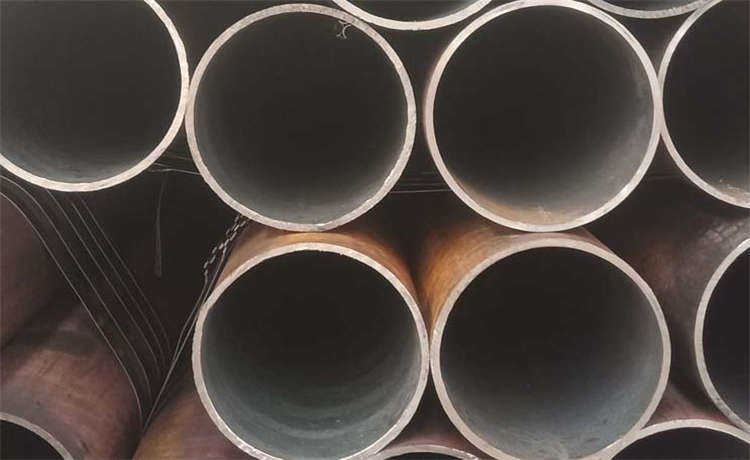Longchangjie Machinery, a manufacturer of spiral steel pipes, specializes in anti-corrosion treatment. It adopts multi-layer epoxy coating technology, which is resistant to acid and alkali and corrosion. It is suitable for water transmission and transportation. As a professional wholesale supplier of anti-corrosion spiral steel pipes, it uses automated welding technology.
一. Production Process
1. Raw material preparation
· The raw materials include steel strip coils, welding wires and fluxes. All of them must undergo strict physical and chemical tests before being put into production to ensure quality compliance. Steel strip coils can be made of various steel plates of different materials, such as carbon steel, alloy steel, etc.
2. Steel strip treatment
· The head and tail of the steel strip are joined by single wire or double wire submerged arc welding. After being rolled into steel pipes, automatic submerged arc welding is also used for repair welding.
· Before forming, the steel strip needs to undergo leveling, trimming, planing, surface cleaning and conveying, as well as pre-bending edge treatment. Meanwhile, an electrical contact pressure gauge is used to control the pressure of the oil cylinders on both sides of the conveyor to ensure the smooth conveying of the steel strip.
3. Forming
· The external control or internal control roller forming is adopted. The steel strip is gradually rolled up by multiple rolls to form a circular tube blank with an open gap. After the tube blank is sent into the pipe welding unit, the reduction of the extrusion roller is adjusted to control the weld gap within 1-3mm and make the two ends of the weld flush.
· If the gap is too large, it will lead to a reduction in the proximity effect, insufficient eddy current heat, and poor intergranular bonding of the weld seam, resulting in incomplete fusion or cracking. If the gap is too small, it will cause an increase in the proximity effect, excessive welding heat, resulting in burning damage to the weld seam, or deep pits will form after the weld seam is squeezed or rolled, affecting the surface quality of the weld seam.
4. Welding
· Both the inner and outer welding are carried out by using Lincoln welding machines from the United States for single wire or double wire submerged arc welding, achieving stable welding quality. High-frequency current can also be used to generate arc-shaped heating at the edge of the steel strip, and then continuous spiral welding can be carried out.
· All the weld seams after welding are inspected by an online continuous ultrasonic automatic flaw detector, ensuring the non-destructive testing coverage rate of the spiral weld seams. If there are any defects, an automatic alarm will be triggered and a marking will be sprayed. Workers can adjust the process parameters at any time based on this to eliminate the defects promptly.
5. Cutting
· The steel pipes are cut into single pieces by air plasma cutting machines. After being cut into single pieces, each batch of steel pipes must undergo a strict first inspection system to check the mechanical properties, chemical composition, fusion status of the weld seams, surface quality of the steel pipes, and pass non-destructive testing. Only after ensuring that the pipe-making process is qualified can they be officially put into production.
6. Quality review and testing
· For the parts of the weld seam with continuous acoustic wave flaw detection marks, manual ultrasonic and X-ray rechecks are conducted. If there are indeed defects, after repair, non-destructive testing is carried out again until it is confirmed that the defects have been eliminated.
· All the pipes where the butt welds of the steel strip and the T-joints intersecting with the spiral welds are located have been inspected by X-ray television or radiography.
· Each steel pipe must undergo a hydrostatic test. The pressure is sealed radially. The test pressure and time are strictly controlled by the microcomputer detection device for steel pipe water pressure. The test parameters are automatically printed and recorded.
· The pipe ends also need to undergo mechanical processing to accurately control the verticality of the end face, the bevel Angle and the dull edge.
7. Other treatments
· According to the requirements, the spiral steel pipes are cut and punched to meet different usage requirements.
· After rust removal and anti-corrosion treatment, such as hot-dip galvanizing or coating treatment, the anti-corrosion performance of spiral steel pipes is enhanced and their service life is prolonged.
二. Characteristics
1. Production aspect
· Forming advantages: During the forming process, the steel plate deforms uniformly, has small residual stress, and no scratches occur on the surface. The processed spiral steel pipes have greater flexibility in the size and specification range of diameter and wall thickness, especially in the production of high-grade thick-walled pipes, particularly medium and small diameter thick-walled pipes, which have advantages that other processes cannot match, and can meet users' more requirements for the specifications of spiral steel pipes.
· High welding quality: Advanced double-sided submerged arc welding technology is adopted, which can achieve welding at the best position, and is less likely to have defects such as misalignment, weld deviation and incomplete penetration, making it easy to control the welding quality.
· Strict quality control: 100% quality inspection is carried out on steel pipes to ensure that the entire production process of steel pipes is under effective detection and monitoring, effectively guaranteeing product quality. All the equipment on the entire production line is equipped with the function of being networked with the computer data acquisition system to achieve real-time data transmission, and the technical parameters during the production process are controlled by the central control room.
2. Regarding product performance
· Wide range of raw materials: It can be made of various steel plates of different materials, such as carbon steel, alloy steel, etc., and has a wide range of applications.
· Stable structure: Utilizing spiral welding technology, the welding points are firm and the structure is stable, capable of withstanding considerable pressure and force.
· Anti-corrosion and durability: The surface is treated with hot-dip galvanizing or coating, which has excellent anti-corrosion performance and long durability.
3. Regarding cost and specifications
· Cost features: It can produce welded pipes with larger diameters using narrower billets, and also produce welded pipes with different diameters using billets of the same width. However, compared with straight seam pipes of the same length, the weld length increases by 30% to 100%, and the production speed is relatively low. Therefore, for smaller diameter welded pipes, straight seam welding is mostly adopted, while for larger diameter welded pipes, spiral welding is mostly used.


